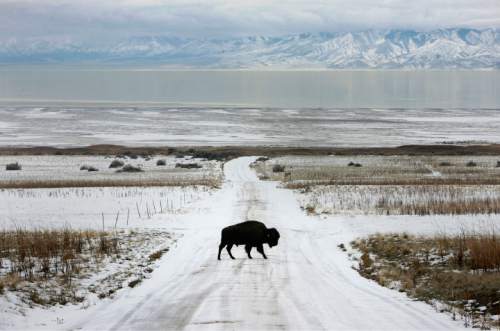This is an archived article that was published on sltrib.com in 2015, and information in the article may be outdated. It is provided only for personal research purposes and may not be reprinted.
Outside of urban-style pursuits such as health care and technology, the outdoors is the sustainable future of Utah's economy.
So it makes sense that the people in charge of the state's park system are starting to look into the possibility of not only expanding the size and offerings of state parks, but also a way to pay for it.
The person in charge of the Utah Division of Parks and Recreation, Fred Hayes, has told state lawmakers that his staff is in the early stages of sketching out plans to add more land to the state park system and to provide visitors to those parks with more things to do.
Four years ago, the division was on the receiving end of a blistering audit report that determined the system was being subsidized by taxpayers to a degree that was deemed unacceptable. But Hayes told members of the Legislature's Natural Resources, Agriculture and Environmental Quality Interim Committee recently that the division's budget has been balanced and its managers are on the lookout for places to create new parks, make existing parks bigger — sometimes a lot bigger — and provide services such as marinas, campgrounds, markets and trails for bicycles and ATVs.
Properly managed, and funded, more outdoor recreation on more state land promises an ongoing stream of both commerce and good will for Utah. Certainly it will create an economic base for non-urban areas that, while lacking the potential boom of drilling and mining, also will avoid the inevitable bust. And interminable clean-up.
The number of visitors to the state's parks is up in recent years, in part because the popularity of Utah's "Mighty Five" national parks is so great that some folks can't get in. So they check down to one or more of the 43 state parks.
Development of state-owned land could also provide an outlet for some of the more invasive forms of outdoor recreation, such as building campgrounds and lodges, installing boat slips and, in some places, allowing motorized vehicles of the sort that often are — and should be — banned from some federal lands.
Plans include expanding Goblin Valley and Gooseneck state parks, doubling the size of the marina at Bear Lake and expanding the boating facilities at the Great Salt Lake.
Hayes said the idea is that all the expansions would, over time, pay for themselves in user fees. That would be ideal, perhaps, though the economic spinoff should justify some state contribution.
Best of all, once the state puts money into parks, it will be less likely to ruin them with short-term uses of drilling, mining and overuse of water.



